#imperial porcelain factory
Explore tagged Tumblr posts
Text

"The Fox and the Beaver," Mikhalkov fable - Boris Iakovlevich Vorob'ev, Lomonosov State Porcelain Factory - 1950
#fox figure of the day#red fox#1900s#boris iakovlevich vorob'ev#lomonosov state porcelain factory#imperial porcelain factory#ussr#russia#fox friends#anthro#fable
12 notes
·
View notes
Text
Lomonosov Porcelain: The Art and Legacy of Russian Ceramics
Lomonosov porcelain, renowned worldwide for its intricate craftsmanship and artistic beauty, holds a unique place in the history of ceramics. Founded in 1744 by Empress Elizabeth of Russia, the Lomonosov Porcelain Factory (now known as the Imperial Porcelain Factory) is the first of its kind in Russia and among the oldest porcelain manufacturers in Europe. Each piece of Lomonosov porcelain tells a story of cultural pride, innovation, and artistic expression, combining Russian traditions with European techniques to create ceramics that are both practical and elegant.
The origins of the Lomonosov Porcelain Factory trace back to the scientific pursuits of Dmitry Ivanovich Vinogradov, a Russian scientist and one of the first to master the complex chemistry of porcelain in Russia. Vinogradov's dedication led to the development of a unique Russian formula for hard-paste porcelain, aligning with Western advancements while establishing its own distinct character. Through decades of royal patronage and innovative design, Lomonosov porcelain evolved to become synonymous with Russia’s aristocracy and artistic heritage. In the early years, it was the exclusive purview of the Russian court, producing pieces for the imperial family and close allies.
The designs of Lomonosov porcelain have changed dramatically over centuries, yet its style has remained unmistakable. In the 19th century, the factory created luxurious tableware and decorative items inspired by classical art and nature, often with motifs that included floral patterns, animals, and scenes from Russian folklore. One of the most recognizable styles, the cobalt net pattern, became an iconic symbol of Lomonosov porcelain, embodying both traditional Russian aesthetics and modern design elements. Painted in deep cobalt blue on a white porcelain base, the intricate latticework of the cobalt net pattern continues to appeal to collectors around the world.
In addition to its distinct patterns, Lomonosov porcelain is celebrated for its durability and quality. The factory has maintained rigorous standards for centuries, ensuring that each piece is a work of art that lasts. During the Soviet period, the Lomonosov Porcelain Factory became more accessible to the public, expanding its production and adapting its designs to include Soviet symbols and themes. This shift allowed more people to appreciate and collect Lomonosov porcelain, increasing its popularity both in Russia and internationally. Despite political and social changes, the factory preserved its commitment to artistry and innovation, cementing its legacy in ceramic history.
Today, Lomonosov porcelain remains a sought-after item, valued by collectors for its artistic heritage and superior craftsmanship. The factory, now operating as the Imperial Porcelain Factory, continues to produce both classic designs and contemporary pieces that reflect modern tastes. With a blend of historical reverence and cutting-edge creativity, Lomonosov porcelain upholds its reputation as a symbol of Russian artistry and cultural resilience.
0 notes
Text
10 Insanely Pricey Things Only Found in Russia
10 Insanely Pricey Things Only Found in Russia https://www.youtube.com/watch?v=kIf8Oe60Ewk Dive into Russia's extravagance as we explore the allure of luxury and the significance of jaw-dropping price tags! Discover the most expensive items, from the opulent Caviar House and the luxurious Golden Eagle Trans-Siberian Express to the iconic Fabergé eggs. Witness the splendor of Moscow's Red Square apartments, the priceless Black Square painting, the prestigious Aurus Senat car, the exquisite Imperial Porcelain Factory dinner set, and the coveted tickets to the Bolshoi Theatre. Experience luxury in one of the world's most fascinating countries. Don't forget to like and share the video! #luxury #russia #faberge #eggs #goldeneagle #express #redsquare #AurusSenat #bolshoitheatre #luxurylifestyle via Top Viral https://www.youtube.com/channel/UClbTtzALtMT8AsToyJnTRGA October 18, 2024 at 10:00PM
#hightechcars#luxurycars#top10#BetterSleep#SleepTips#RestfulNights#SleepWellness#Top10Tips#SleepHacks#HealthySleep#BedtimeRoutine
1 note
·
View note
Text
Русский фарфор - Russian porcelain (V)
Русский фарфор – Russian porcelain (V) После революции 1917 года:После Октябрьской революции Императорский фарфоровый завод был в подчинении Комиссариата земледелия. В 1918 году завод был передан в подчинение Народного комиссариата просвещения. After the 1917 revolution:After the October Revolution, the Imperial Porcelain Factory was subordinated to the Commissariat of Agriculture and received…

View On WordPress
0 notes
Photo

Ballerina Rare porcelain figurine Made in USSR 1950s Wonderful figurine was made at the former Kornylov Porcelain factory in St-Petersburg, Russia. The Kornyloff factory, started in 1835 by two brothers of a merchant family in Petersburg, engaged skilled artists and crafts men from the Imperial, Gardner, and Popov factories. It quickly acquired a reputation for artistic excellence, and as early as 1839 won a gold medal at the Moscow ceramic exhibition. The owners spared no expense and trouble to bring their products to perfection, and for this purpose commissioned original drawings from leading artists of the day. The gorgeous colouring, rich gilding, and decorative finesse of Kornyloff products soon became well known, and they were sought after by collectors. In the last decades of the nineteenth century this factory started mass production of cheap porcelain wares for export. After the October Revolution of 1917 the factory was nationalised and renamed LZFI. It is in excellent condition, no chips, no cracks. 9 1/2 inch. tall. It has a factory monogram on the bottom. Pictures are part of the description and reflect the current state of the article. The real color of the item may be slightly different from the pictures shown on the website caused by many factors such as brightness of your monitor and light brightness. I accept PayPal only. Shipping: Standard domestic and international shipping.Please note that any returns, insurances or customs duties levied are the responsibility of the buyer. Customs can cause delays with your shipment which the seller has no control over. Please consider such delays when making your purchase. Despatch Time: We ship via registered airmail with the tracking number within 72 hours of receipt of cleared payment. The estimate delivery time to Europe is about 16-25 days, to the USA -20-40 days Returns: If you are not happy with your item, please return it to us in its original packaging within 14 days. Return shipping must be paid for by the buyer. Refund of purchase price will be made through PayPal. #1603 https://www.etsy.com/listing/916369563/ballerina-rare-porcelain-figurine-made
0 notes
Text
“Hundreds of flowers never fall to the ground”, one piece of fire will become the world’s favorite

The blooming and falling of flowers is an aesthetic artistic conception that literati in the past dynasties cannot refuse, but how to keep this beauty? In ancient times, in addition to painting, it can also be fired into porcelain!

In 2010, Beijing Poly Autumn Auction sold a gourd vase with a famille rose color for 22.4 million RMB. So how are the priceless “Hundred Flowers” fired?
One vessel burned into the world’s favorite
The Jingdezhen Imperial Kiln Factory in the Qianlong period of the Qing Dynasty brought together a group of the most famous contemporary craftsmen, so the porcelain of this period reached an unattainable height in terms of both quantity and quality.
“Hundreds of flowers without revealing” is a way of expressing glaze on porcelain, which means that flowers of various colors fill the entire picture without revealing the bottom of the porcelain or the branches of the flowers.
The complicated firing process, rich colors, and colorful paintings of Hundred Flowers Porcelain are by no means accomplished by the efforts of a few people. If there are no good craftsmen to compose and design for it, and skillful craftsmen to apply color, wash and dye it, how can a piece be made and loved by the world?
Check out our collection of Vintage Teacup, we offer beautifully vintage china for your home.

First of all, the Office of the Ministry of Internal Affairs needs to issue a drawing sample, design a drawing of a hundred flowers gathering, and deliver it to the Imperial Kiln Factory as a sample. For ingenuity.
Secondly, the craftsmen of the imperial kiln factory copied and sketched the drawing on the white porcelain body, which must be consistent with the original manuscript. No matter how superb the painter is, it cannot make up for the original charm of the drawing.
Third, the number of color materials prepared is the first among all porcelains. If a hundred flowers are not exposed to the ground, there are no less than 30 colors on one vessel. Therefore, before painting, all pigments for colored porcelain must be prepared. There are nearly a hundred kinds of colors. Each type needs to be debugged one by one. It is conceivable how much manpower, how much time will be spent, and how much cost will be paid in advance for the completion of this work.
Finally, painting, washing, and dyeing must go through the hands of several painters, and it takes more than ten days before it can be put into the kiln. Therefore, it took several months to complete a vessel, which cost a lot of money and is by no means comparable to other imperial porcelains. Such craftsmanship must appear in a world of prosperous craftsmanship.
Check out our collection of Vintage Teacup, we offer beautifully vintage china for your home.

During the Qianlong period, the art of porcelain was advanced, and Tang Ying, the emissary of pottery, devoted all his efforts to collecting the achievements of famous kilns in the past dynasties, including the essence of Chinese and foreign fine wares. The splendor of the ages. During this period, he not only advocated retro but also had the courage to innovate. The technological breakthroughs and artistic new looks brought about by him have written an important page in the history of Chinese art.
Just as “Tao Ya” said: “As far as Qianlong is concerned, there are extremely beautiful and delicate, almost ingenious workmanship.” Among them, a hundred flowers are not exposed, which is a precious and meaningful product of Qianlong imperial porcelain pastel ware, which has been treasured by collectors. So precious.
The ultimate vintage teacup subscription: https://kimkiln.com/
0 notes
Photo

St.Petersburg. The Museum of the Imperial Porcelain Factory. Plate with an ornament in the "Russian style" and the double-headed eagles. Imperial Porcelain Factory, Russia. 1840s. Porcelain, polychrome overglaze painting, gilding with tooled.
#imperial porcelain factory#lomonosov#ceramic#19th century#russian national romantic style#russian design
36 notes
·
View notes
Text





▪︎Ornamental vase.
Artist/Maker: Nyesztyerev, P. / painter; Szavaljev, P.
Manufacturer: Imperial Porcelain Factory (Saint Petersburg)
Date: ca. 1850
Place of origin: Saint Petersburg
Medium: Porcelain
#19th century#19th century pottery#19th century decorative arts#pottery#decorative arts#ornamental vase#vase#imperial porcelain factory#porcelain#saint petersburg#ca. 1850
72 notes
·
View notes
Photo
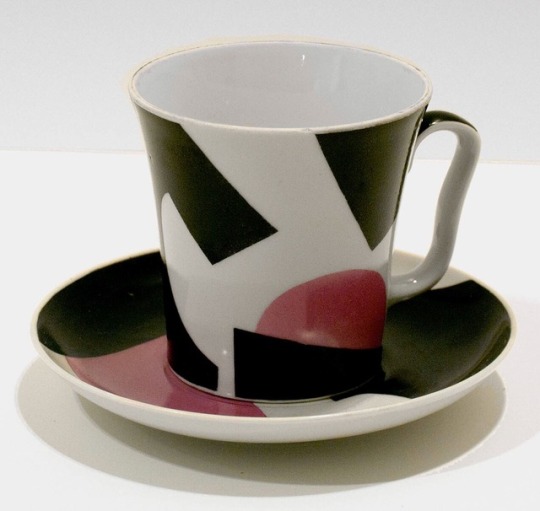
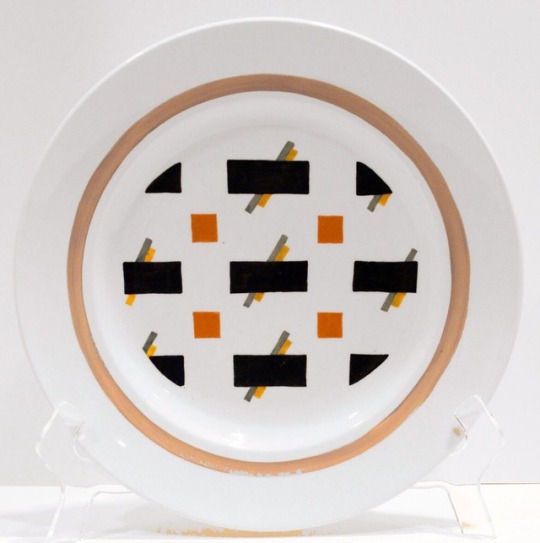
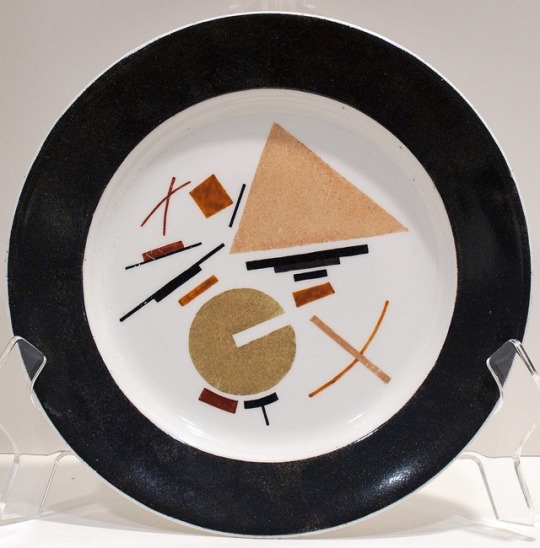
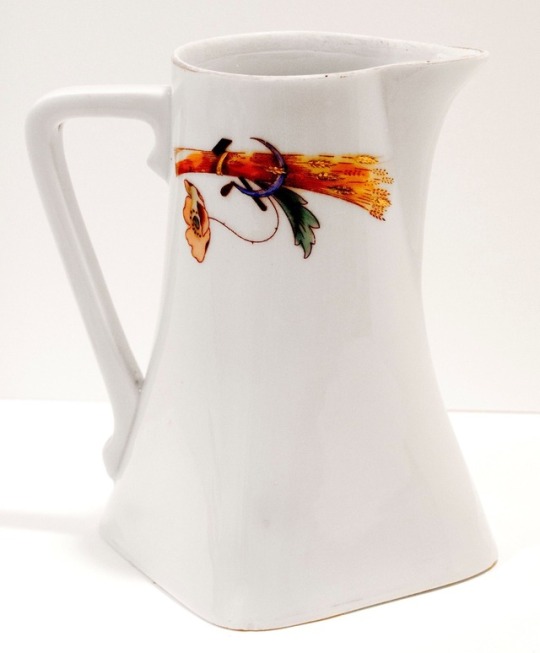


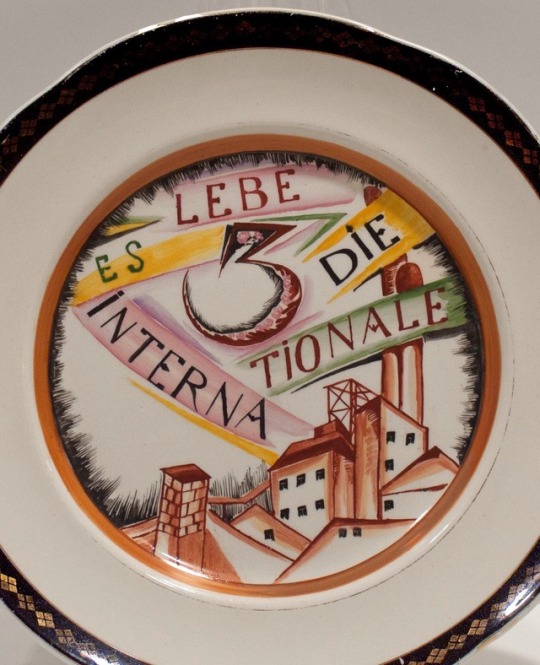

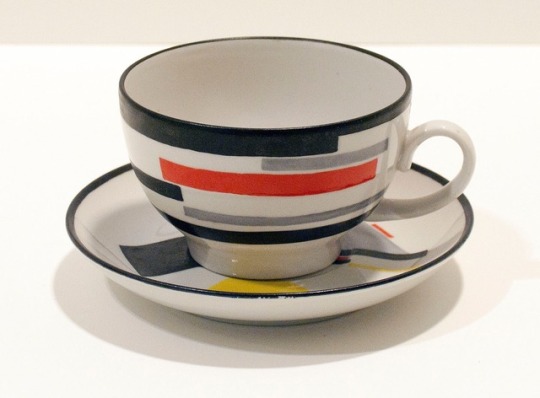

SOVIET AVANT-GARDE PORCELAIN
In the early years of the Soviet Union, radical politics and avant-garde art were united in the unlikely medium of porcelain ceramics.
In 1918, the new Soviet regime appointed artist Sergei Chekhonin to direct the newly re-organized Imperial Porcelain Manufacture near St Petersburg. The factory, which formerly catered only to the tsar’s family and the aristocracy, was charged with making high-quality ceramics available to the people. The rebranding of porcelain was also an viewed as an occasion to instill revolutionary fervor–texts and images expounding the principles of Communism and extolling the success of the new worker’s state were hand painted on to dinner plates and tea cups fired prior to 1917, and bearing the imperial stamp.
In 1923, avant-garde artists were asked to contribute designs for porcelain. Kazimir Malevich, Wassily Kandinsky, and El Lizzitsky authored multiple drawings which were then hand-transferred to porcelain by factory-trained ceramic painters. The Suprematists Nikolai Suetin, Ilya Chashnik and Ivan Puni scored major successes with brilliantly-conceived abstract patterns. Avant-gardeware was a surprise hit with the masses, far outselling figurative models and refuting the charge, soon to be made official doctrine by Stalin, that modern art was inherently elitist, decadent and antithetical to revolutionary principles.
The objects illustrated above are from a distinguished private collection of Soviet porcelain assembled in East Berlin. After the collapse of the DDR, the 60+ objects were sold to a Los Angeles dealer, who, in turn, sold the lot to a Los Angeles collector of Russian modern art in 1991. After his death in 2018, his estate is hoping to arrange a private sale of the collection.
#russian avant-garde art#soviet propaganda#imperial porcelain factory#sergei chekhonin#kazimir malevich#wassily kandinsky#natalia danko
578 notes
·
View notes
Photo

“A PORCELAIN EASTER EGG” | XIX CENT. THE IMPERIAL PORCELAIN FACTORY
Ovoid, centering an oval panel depicting a putto, after Raphael's Sistine Madonna, within gilt ciselé foliate and geometric border on lavender ground, with a pale pink silk ribbon. [H: 4 5/8″]
32 notes
·
View notes
Video
youtube
Русский фарфор XVIII-XIX вв. Эрмитаж 1970 г. Russian porcelain of the XV...
#antique porcelain#старинный фарфор#Russian porcelain#Russian porcelain of the 18th-19th centuries#the Hermitage of 1970#the Hermitage#the Imperial Porcelain Factory#A. Popov's factory#Russian art#F. Gardner's factory#Russian ceramics#Russian history#Русский фарфор XVIII-XIX вв#Эрмитаж 1970 г#Эрмитаж#Императорский фарфоровый завод#завод А. Попова#русское искусство#завод Ф. Гарднера#русская керамика#русская история
2 notes
·
View notes
Photo


Soviet-era Russian porcelain fox I bought in an antique shop today. Been after one of these for a while! It was made by the Lomonosov Imperial Porcelain Factory in Saint Petersburg.
#there's also a model of a fox in a play bow pose that i REALLY want#lomonosov porcelain#russian porcelain#foxes
28 notes
·
View notes
Photo


War Plate Depicting Four Grenadiers of the Palace Grenadiers Company in the Throne Hall of Empress Maria Feodorovna in the Winter Palace, 1829, Imperial Porcelain factory
26 notes
·
View notes
Text
Bowl with a Pine Branch
This bowl was made by Japanese potter Miyagawa Hanzan c. 1925 in the style of Nin’ami Dōhachi (1783 - 1855). It is decorated with a beautiful pine branch that wraps around the inside and outside of the object 🌲 Miyagawa Hanzan, who also made the wonderful shrimp vase we shared earlier this week, was the adopted son of Miyagawa Kōzan, artist to the Japanese Imperial household and was one of the most pre-eminent potters of the Meiji period. He came from a long line of potters in Kyoto, and began studying fine art at a very young age. When Kōzan died in 1916, Hanzan took the name Kōzan II, and began to work with stoneware as well as porcelain. Sadly, the factory they ran together in Yokohama was destroyed in World War II. Japan, 1925. Earthenware, thrown with hand-modelled, cut, and pierced decoration. See it in gallery 36.

#Ashmolean#Ashmolean Museum#Museum#Oxford#Oxford University#Art#Culture#Art History#Material Culture#History#Instahistory#Instamuseum#Object#Meiji#Japan#Ceramics#Eastern Art#Japanese Art#Kozan#Hanzan#harry potter
133 notes
·
View notes
Text
Русский фарфор -Russian porcelain (IV)
Русский фарфор -Russian porcelain (IV) Императорский фарфоровый завод – Imperial porcelain factory in Saint Petersburg: Исторический период при Николае I, Александре II, Александре III (1825 – 1894): В александровскую и николаевскую (1825–1894 ) эпохи были изготовлены сервизы почти для всех резиденций Петербурга. Николаевский фарфор отличался виртуозной живописью. Historical period under the…

View On WordPress
0 notes
Photo







SVA.TTT
The preview of my new limited product! Mug and saucer sets and plates are made of porcelain with decal print on them. All items are produced on Saint Petersburg Imperial Porcelain factory. Package is made of blue mate catronnage with silver print embossment and a serial number. Two versions are available. Prints were created by me in 2015. These prints were used in a collaboration line of clothing of the luxury brand TTSWTRS in 2019. Digital projects are presented on the photos. Produced items may have a bit various design. Preorder available!
For all questions https://www.instagram.com/sva.ttt/
29 notes
·
View notes